Map Of Lai Chau: The Hidden Gem Of Northwest Vietnam
Lai Chau captivates travelers with its poetic, majestic beauty—where mist-shrouded mountain ranges, murmuring streams, winding roads, mysterious caves, and enchanting waterfalls create a dreamlike landscape. A journey to this remote highland of Vietnam promises not only unique and exciting experiences but also a touch of adventure for those seeking to explore the unexplored.
Geography & Administrative Divisions
Lai Chau is a border province in the northwest region of Vietnam, located about 385 km from Hanoi and just 70 km from Sapa. It shares a land border with China and is renowned for its majestic natural landscapes and rich cultural diversity, shaped by various ethnic minority groups. The province features rugged mountainous terrain, towering peaks, and winding rivers and streams that together create a vivid and dynamic natural panorama.
Lai Chau’s scenic attractions captivate visitors not only with their beauty but also with the distinctive traditional cultures preserved over generations. As such, it is an ideal destination for travelers who seek to immerse themselves in unspoiled nature and explore the unique cultural identities of Vietnam’s highland ethnic communities.
Here are some key geographical and administrative facts about Lai Chau:
Total area: approximately 9,068 km²
Population: around 512,000 people
Topography: predominantly mountainous, with steep valleys, high peaks, and river systems
Borders: shares an international border with Yunnan Province, China
Region: Northwest Vietnam
Administratively, Lai Chau includes:
1 provincial city: Lai Chau City (provincial capital)
7 districts: Muong Te, Phong Tho, Sin Ho, Tam Duong, Tan Uyen, Than Uyen, Nam Nhun
Climate & Best Time To Visit
With its year-round cool climate and ever-changing seasonal landscapes, Lai Chau offers unique experiences at every time of the year.
Golden Season (September–October): The best time to admire the stunning terraced rice fields turning golden yellow, creating a breathtaking natural landscape. Visit renowned spots like Mu Cang Chai, Tu Le, or Sin Ho to immerse yourself in the vibrant hues of the ripening rice.
Spring (January–March): Lai Chau in spring wears a fresh look with blooming forests of ban flowers and peach blossoms. The weather is warm and pleasant, ideal for trekking, exploring ethnic villages, and enjoying the clean mountain air.
Summer (April–May): This is the season of water pouring, when terraced fields are filled with water, forming a unique and impressive scene. You can also take part in the joyful and lively Water Splashing Festival of the Thai ethnic group.
Winter (December–February): Winter in Lai Chau is magical, with floating seas of clouds covering mountaintops. However, the weather can be quite cold, and snowfall may occur, so warm clothing and essential gear are highly recommended.
Rainy Season (June–August): This is not the ideal time to visit Lai Chau due to slippery roads and the risk of flash floods
Top Attractions & Natural Wonders
O Quy Ho Pass
Located at an altitude of nearly 2,000 meters above sea level, O Quy Ho Pass is one of the highest mountain passes in Vietnam. When you arrive here, you’ll be overwhelmed by its breathtaking beauty—majestic and poetic—with endless mountains stretching into the clouds and winding, meandering roads.
At the summit of the pass, the spectacular panorama of the great northern forests will captivate your gaze. In winter, you might even witness a rare sight in Vietnam: snowfall.
Sin Ho Plateau
Located about 60 kilometers from the center of Lai Chau City, the Sin Ho Plateau rises at an altitude of over 1,500 meters. Often referred to as the “second Sa Pa” of the Northwest, this highland region offers a dramatic climate shift—with all four seasons in a single day—and maintains an average annual temperature of around 18°C.
Nestled among rugged mountains, the Sin Ho Plateau is blanketed by mist and stretches with pristine forests. Golden terraced rice fields curve gracefully along the slopes, accentuating the peaceful villages tucked at the foot of the hills. This is undoubtedly one of the most impressive tourist destinations in Lai Chau.
Tan Uyen Tea Hill
Tan Uyen Tea Hill stretches along National Highway 32, covering an area of up to 2,000 hectares and boasting a history of 40–50 years. This place is known for its lush, green, and dreamy tea fields, combined with fresh, clean air—making it one of the most popular check-in spots in Lai Chau. It is especially favored by couples for wedding photoshoots.
Mountain Peaks
The terrain of Lai Chau is shaped by mountain ranges running northwest to southeast, giving rise to numerous peaks that attract trekking enthusiasts. Notable ones include Pusilung (3,083 m—the second highest peak in Vietnam after Fansipan), Pu Ta Leng (3,049 m), Bach Moc Luong Tu (3,046 m), and Ta Lien Son (2,996 m).
The typical trekking season lasts from October to April, when the weather is dry, offering opportunities to hunt clouds and admire blooming wildflowers such as rhododendrons, chi pau, and forest peaches. For safety and convenience, travelers are advised to join guided tours or hire local porters to avoid getting lost.
Muong Than Rice Fields
With an agricultural production area of around 2,000 hectares, Muong Than is one of the largest and most beautiful rice fields in the Northwest region. Visitors traveling between July and September can witness the vast golden fields during the rice harvest season, where ripened rice sways gently in the breeze under golden sunlight, creating a charming and poetic rural landscape that captivates every traveler.
Pu Sam Cap Cave Complex
Located about 6 km from Lai Chau City, the Pu Sam Cap cave complex is dubbed the “No. 1 Cave of the Northwest.” Currently, two caves—Thien Mon (Heaven’s Gate) and Thien Duong (Paradise Cave)—are open to visitors, featuring mysterious and mesmerizing stalactites and stalagmites. Here, every drop of water falling from the cave formations creates an unexpectedly vivid sound. Visitors to this site are often left in awe by the vast natural scenery, with high and spacious cave arches and a cave floor that resembles the rippling surface of a lake.
Vang Po Hot Springs
Visiting the Vang Po hot spring offers travelers a chance to relax and unwind after long days of work and stress. This famous hot spring is also widely believed to help relieve ailments such as rheumatism, stomach pain, and digestive issues when one regularly soaks in its warm waters. So, on your journey through Lai Chau, don’t miss the opportunity to immerse yourself in the soothing waters of Vang Po hot spring and take in the vast, beautiful natural surroundings.
Na Luong Village
Na Luong attracts tourists with its pristine, poetic beauty, where endless rice fields stretch beneath a vast sea of clouds and mountains. The atmosphere here is fresh, cool, and peaceful—perfect for those looking to escape the noise and pollution of the city. Moreover, visitors to Na Luong will also have the chance to discover the unique traditional culture of the Lao ethnic people living in this area.
Si Thau Chai Village
Si Thau Chai is one of the lesser-known tourist destinations in Lai Chau, still relatively undeveloped in terms of tourism, yet it holds a strong appeal for many travelers. Numerous community groups come here to explore, experience local life, and organize exciting motorbike trips. Thanks to this growing interest, Si Thau Chai is gradually becoming an attractive and fascinating destination that no visitor to Lai Chau should miss on their journey of discovery.
Rong May Glass Bridge
Located at an altitude of over 2,000 meters, the Rong May Glass Bridge is currently the highest glass bridge in Vietnam. It is designed on a grand scale and built to international standards, with its entire surface made of transparent, tempered glass and featuring an outdoor elevator system that rises 300 meters. Standing on the bridge, visitors can feel a sense of exhilaration as they look down into the dizzying depths below or gaze into the distance to admire the majestic natural landscape. The rush of wind, swirling clouds, and breathtaking views from the top of O Quy Ho Pass unfold naturally before their eyes, creating an unforgettable experience.
Tac Tinh Waterfall
Tac Tinh Waterfall, standing 130 meters high, is nestled amidst a vast and majestic mountainous landscape. From a distance, the cascading water looks like a soft silk ribbon gracefully flowing through the vastness of the rugged forested mountains. Visitors to Tac Tinh Waterfall are treated to a picturesque and untouched natural scene, allowing them to relax, feel uplifted, and listen to the locals share the heartfelt legend of a devoted couple whose enduring love gave birth to this enchanting and mysterious waterfall that captivates all who see it.
San Thang Weekly Market
San Thang is a highland commune in Tam Duong District, Lai Chau Province. It is home to six ethnic groups, each with its own unique customs and traditions, contributing to a rich and diverse cultural tapestry.
The local market takes place every Thursday and Sunday morning. On regular days, the market usually runs from 5 AM to 9 AM, but during harvest season or special occasions such as Tet or festivals, it can last until 11 AM.
The San Thang market is always vibrant with the colorful traditional attire of various ethnic groups—glittering patterns on the scarves, bags, shirts, pants, and skirts of Dao and Lu girls, and the fluttering silver buttons on the outfits of White Thai maidens, resembling butterflies in motion.
Food And Cuisine
Ca Bong Vui Tro (River Goby Wrapped And Cooked In Hot Ashes)
If you have the chance to visit Phong Tho District, don’t miss ca bong vui tro—a local specialty of the Thai ethnic group. Small goby fish, found in local rivers and streams, are cleaned and marinated with finely chopped ingredients such as lemongrass, chili, ginger, pepper, mac khen (a native spice), basil, and hom leaves. After marinating for 15 to 30 minutes, the fish are wrapped in dong leaves and buried in hot ash. They are turned every 30 minutes, and after several turns, the fish are perfectly cooked.
Lam Nho (Bamboo Tube Grilled Buffalo Meat)
Lam nho (where “lam” means grilled and “nho” means tender) is a traditional dish made from thinly sliced buffalo or beef mixed with local spices like mac khen (a native pepper), chili, garlic, ginger, wild eggplant, pumpkin shoots, and young pumpkin. Once the meat, spices, and vegetables are well mixed and absorbed, the mixture is lightly grilled in bamboo tubes. After that, the meat is taken out, mashed finely, and grilled once more. When served, Lam nho offers a rich, savory flavor with a soft, tender texture that binds together, allowing it to be sliced into compact pieces.
Lon Cap Nach (Carried Under Arm Pig)
If you visit Lai Chau, don’t miss the chance to try lon cap nach—a local specialty that never fails to impress visitors. These pigs are naturally raised, freely roaming the mountains and feeding only on forest leaves and vegetables. As a result, their meat is exceptionally firm and flavorful.
Purple Sticky Rice
As a traditional dish of the highland ethnic communities in Lai Chau, purple sticky rice showcases the skillful hands of local women in its preparation. Upland glutinous rice is soaked for 6–8 hours before being steamed. Its distinctive and appealing purple color comes from a forest plant called “khau cam” (a type of wild leaf).
Grilled Stone Moss
Stone moss is considered a natural, clean vegetable by the people of Lai Chau. Harvesting it is a meticulous process, as it must be collected from rocks along mountain streams and then prepared into delicious family dishes such as soups and grilled or stir-fried dishes. To process the moss, it is first placed in a basket and rinsed with clean water to remove sand and impurities. Then, it is laid on a large stone or chopping board and repeatedly pounded with a heavy wooden stick. Only after several rounds of pounding is it ready for cooking.
Mong’s Banh Day (Mong’s Glutinous Rice Cake)
One of Lai Chau’s must-try specialties is the Mong people’s banh day (glutinous sticky rice cake). Unlike other versions, this bánh dày has no filling, is large in size, and is pan-fried with pork fat. The cake boasts an enticing aroma from upland sticky rice, chicken eggs, and pork fat—all blending together into a uniquely flavorful treat.
Culture & festivals
Ethnic Diversity
Lai Chau is not only captivating for its majestic landscapes but also for the rich cultural tapestry woven by its diverse ethnic communities. Home to over 20 ethnic groups, with more than 84% of the population belonging to minority groups, the province offers a vibrant blend of traditions, languages, festivals, and lifestyles. Among these, 13 ethnic groups live in organized communities, each preserving their customs and heritage, creating a unique cultural mosaic rarely found elsewhere. Visitors to Lai Chau have the rare opportunity to experience firsthand the depth of this diversity—from traditional attire and stilt houses to local cuisines and colorful festivals.
Thai people: Known for their elegant vay com skirts that highlight feminine grace, distinctive stilt houses, and a refined culinary culture.
Hmong people: Easily recognized by their colorful pleated skirts, they are deeply associated with vibrant festivals and traditional music.
Dao people: Distinguished by their bright, elaborate headdresses and garments, and well-known for their expertise in herbal medicine.
Lu people: Famous for their brocade weaving skills, traditional textile patterns, and intricately crafted clothing.
Festivals In Lai Chau
Lai Chau is known as a land rich in the distinctive charm of the Northwest mountains, captivating visitors with its poetic, simple, and rustic beauty. One of the most impressive aspects for travelers when visiting this region is the vibrant festivals that take place throughout all four seasons.
Ban Flower Festival
Held annually on the 13th day of the second lunar month, the Ban Flower Festival coincides with the blooming of white ban flowers, from which it takes its name. The festival originates from an old legend about a couple in love who could not be together in life and turned into ban flowers in death to remain united forever.
During the festival, visitors can enjoy unique performances featuring traditional instruments such as khèn (bamboo pipes), drums, and gongs, all characteristic of the Northwest region. Girls in traditional white Thai attire perform graceful dances, and the festival also serves as an occasion for young men and women to meet and find soulmates.
Nang Han Festival
The Nang Han Festival is a traditional celebration of the White Thai people in Lai Chau, held annually in Muong So commune, Phong Tho district, around the 15th day of the second lunar month.
This festival honors Nang Han, a national heroine. Visitors can witness 32 traditional dances performed by carefully selected White Thai girls who have trained rigorously for the event. The ceremonial part of the festival is carried out based on the memories of village elders and includes offerings of beautifully prepared local dishes to pay tribute to Nang Han.
Gau Tao Festival
The Gau Tao Festival, held by the Hmong people, is an important traditional celebration that takes place every January in villages such as Gia Khau (Nam Loong commune, Lai Chau city). The festival is held to pray for peace, prosperity, favorable weather, and abundant harvests in the new year. It also provides a space for cultural exchange, with folk performances, traditional sports, and games typical of the Hmong community.
Kin Lau Thau Mau Festival
Also known as the Thanksgiving Festival or the New Rice Festival, this is a traditional celebration of the Thai ethnic group in Lai Chau. It is held to express gratitude to ancestors and deities for a bountiful harvest. It’s also a joyful time for young men and women to socialize and connect.
One of the most popular traditional games during the festival is “nem con” (throwing a sacred ball), symbolizing the casting away of bad luck and the welcoming of good fortune.
Bun Voc Nam Festival
The Bun Voc Nam Festival, also known as the Water Splashing Festival, is a vibrant celebration of the Lao ethnic group in Na Tam commune, Tam Duong district. It typically takes place in April, after the harvest season, as a way to pray for rain, bountiful crops, and good health.
The festival also features a variety of folk games such as boat racing, stream fishing, tug of war, throwing “con” balls, and enjoying traditional Lao dishes like bamboo-tube rice, five-colored sticky rice, and chung cake.
How To Get To And Around Lai Chau
Getting To Lai Chau
Lai Chau, a mountainous province in the Northwest region of Vietnam, features rugged terrain that requires careful planning when traveling to and within the area. Below are the most common transportation options for exploring Lai Chau:
Passenger Bus: This is the most popular and budget-friendly way to reach Lai Chau. There are many reputable bus companies such as Hai Van, Hung Thanh and Ha Son offering routes from Hanoi, Sapa, and Dien Bien. The journey takes about 8–10 hours from Hanoi and 4–5 hours from Sapa.
Motorbike: A great option for adventure lovers who enjoy road trips and freedom. However, riding a motorbike in this region requires good physical condition, prior experience with mountain roads, and a well-prepared vehicle. Note that the roads to Lai Chau are winding and steep, so extra caution is essential.
Private Car: Ideal for families or groups, traveling by private car offers comfort and flexibility. Still, drivers must pay attention to traffic signs and drive carefully, as the mountainous roads can be hazardous.
Airplane: Lai Chau currently does not have an airport. The nearest option is to fly to Dien Bien Phu Airport and then take a bus or taxi to Lai Chau. The distance from the airport to Lai Chau is approximately 190 km.
Getting Around In Lai Chau
Due to its mountainous terrain and winding roads, traveling within Lai Chau can be challenging. However, the main roads have been relatively well developed. Here are your main options for getting around:
Motorbike/Car: The most common and convenient means of transport in Lai Chau. If you’re heading to remote villages, motorbikes are especially suitable for navigating small paths. Motorbikes can be rented at hotels, guesthouses, or local rental shops.
Taxi: Taxis offer a safe and comfortable ride, though they tend to be more expensive.
Motorbike Taxi (Xe om): A popular choice for short distances or places where cars can’t reach. Make sure to agree on the price beforehand.
Walking: For those who wish to fully immerse themselves in the natural beauty and local life, walking is an excellent option.
Travel Tips For Moving Around Lai Chau
The roads to and within Lai Chau are steep and winding. Drive carefully and pay close attention to traffic signs.
Bring warm clothing, including jackets, hats, scarves, gloves, and other necessary items, as the weather can be quite cold, especially in winter.
It’s advisable to bring medicine for motion sickness or cold symptoms, just in case.
Where To Stay In Lai Chau
Lai Chau offers a range of hotels in the city center, including major options like Hoang Nham Luxury Hotel and Muong Thanh Lai Chau Hotel, with prices ranging from 800,000 VND to 1.2 million VND. Other choices include Minh Son Hotel, Putaleng Hotel, and Binh Long Hotel, with rates from 200,000 VND to 400,000 VND.
In Sin Suoi Ho Village, there are many clean and well-serviced homestays for visitors, such as Sin Suoi Ho Hideaway Homestay Lai Chau, Bui Sanh Homestay, Chu Vang Homestay, Sung A Sung Homestay, and Chinh Ly Homestay. Room prices range from approximately 300,000 VND to 800,000 VND per night.
Map Of Lai Chau—A Place That Stays With You
Lai Chau is not only famous for its winding roads through the majestic Northwest mountains but also leaves a lasting impression with its rich cultural diversity of many ethnic groups. This map of Lai Chau will help you navigate your way and easily reach popular tourist destinations, turning your journey into an exciting and memorable experience.
>>> Map of Hoang Su Phi: Your Ultimate Guide to Vietnam’s Terraced Rice Paradise
>>> Map of Lao Cai: Your A to Z Guide to Vietnam’s Northern Wonderland
Send us your comments about : Map Of Lai Chau: The Hidden Gem Of Northwest Vietnam
Required fields *
You might also be interested
Travel ideas
Need some inspiration? Discover some of the best tours in Vietnam, which are highly appreciated by our clients. An excellent starting point to help you choose the right trip to Vietnam, Laos, Cambodia, Burma or Thailand, whether you are traveling alone, as a couple, as a family or with friends.
And because this trip is yours, feel free to customize it as you wish!
Vietnam Cambodia Itinerary 14 Days
Hanoi – Hoa Binh – Mai Chau – Ninh Binh – Halong bay – Hue - Danang – Hoian – Saigon – Ben Tre - Can Tho – Saigon - Siem Reap Angkor - Tonlé Sap - Siem Reap – Ta Prohm - Departure
Vietnam 14 Day Itinerary
Vietnam 14-day itinerary covers the country’s top highlights and quintessential experiences for an unforgettable journey.
Honeymoon Tour Pakcages In Vietnam 12 Days
Saigon Arrival - City Tour – Mekong Delta – Danang – Hoian - by flight - Da Nang – Hanoi - by flight – Halong - overnight on junk – Departure
Authentic Hoang Su Phi Trekking Tours
Hoang Su Phi trekking tours take you to stunning terraces, meet few tourists, connect with locals and enjoy authentic culture.
Best Nha Trang Beach Tour 4 Days
Saigon/Hanoi – Nha Trang relaxation – Saigon/Hanoi – Departure
Mekong Delta Bike Tour Itinerary 7 Days
Cycle through the Mekong Delta in 7 days, discovering floating markets, orchards, craft villages, and tranquil green islands.
Are you interested in this tour?



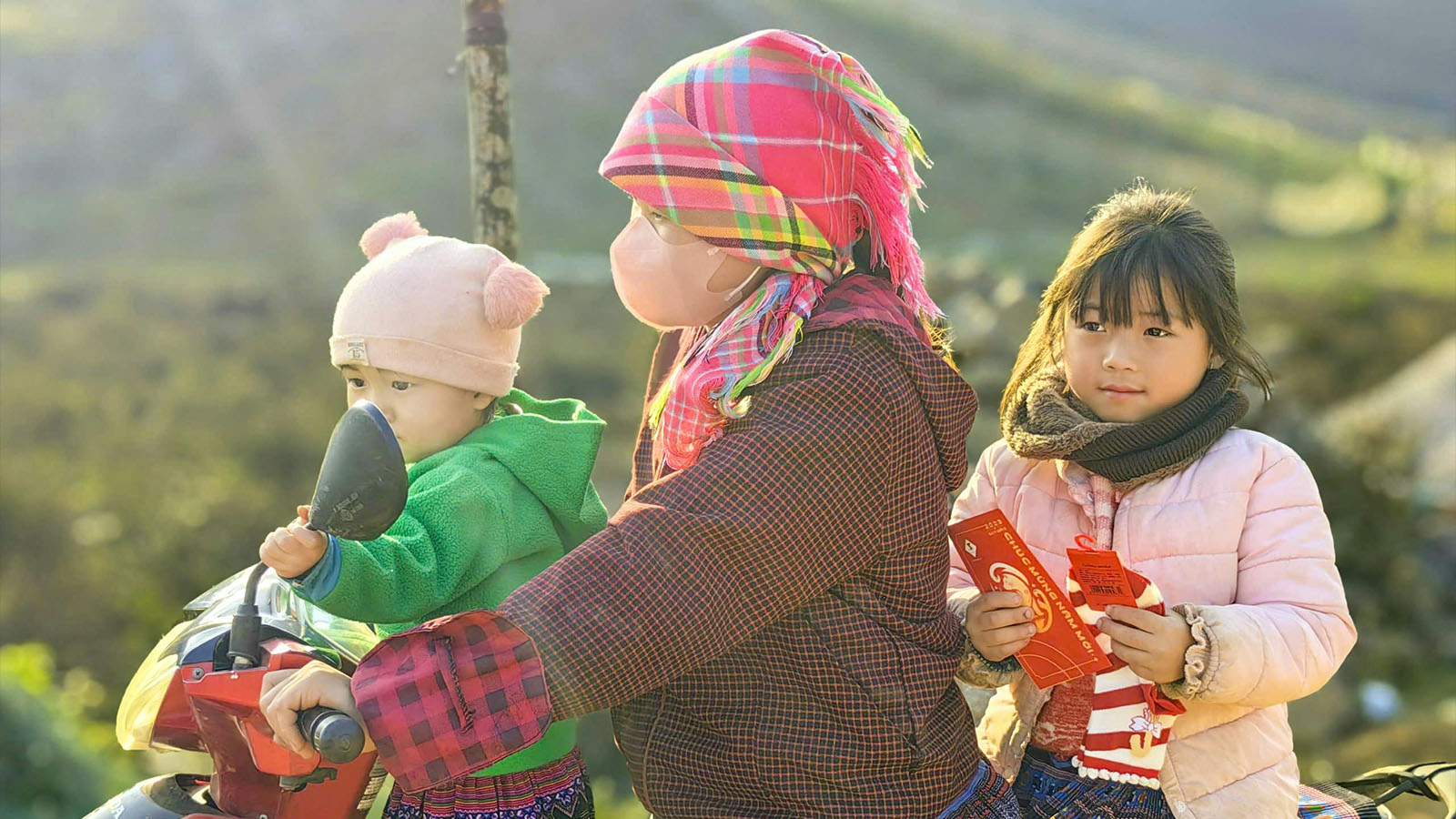




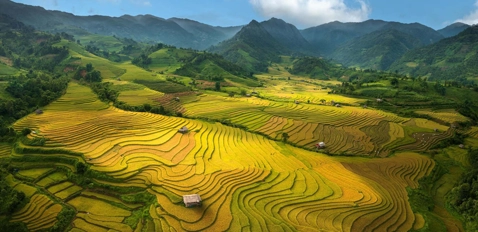

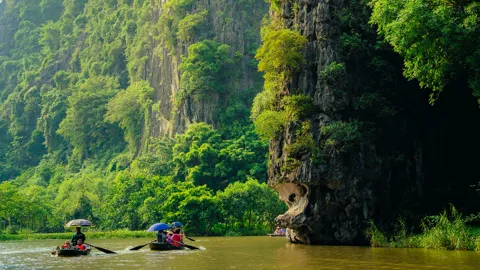




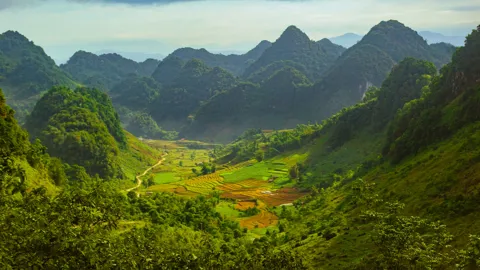

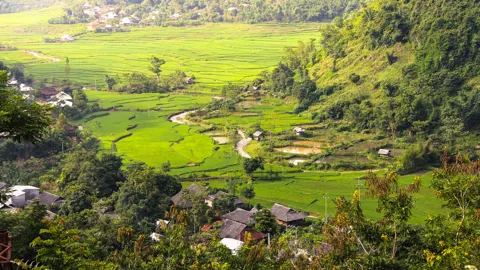
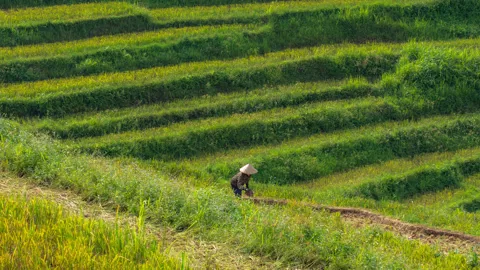


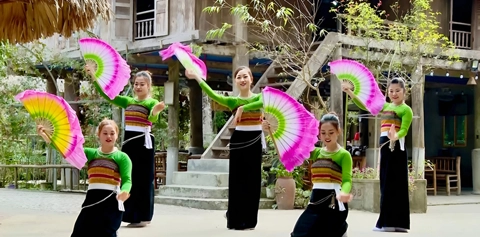













Comment